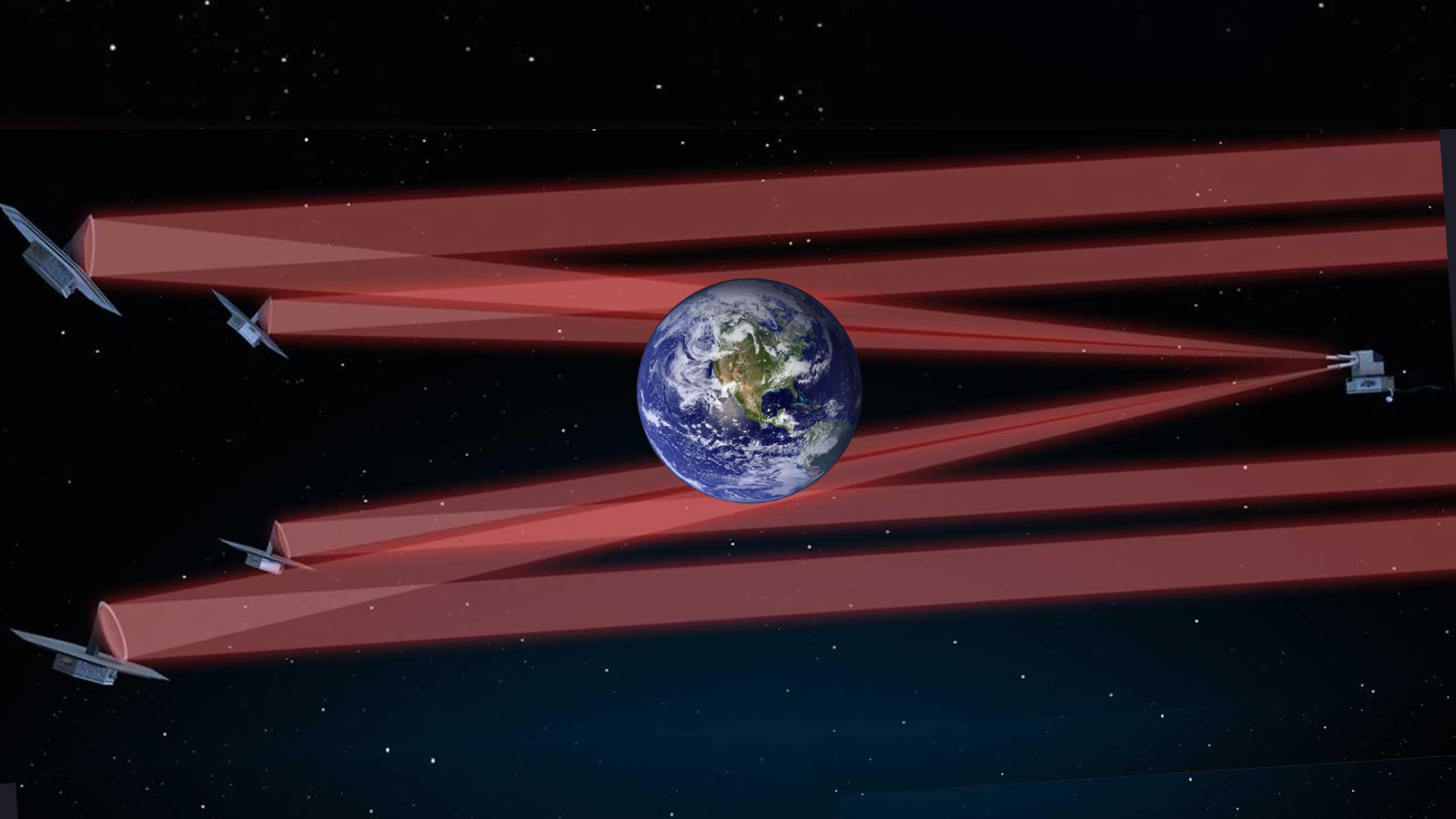If aliens had our life-hunting equipment, could they find us?

After conducting a fair bit of research, scientists have come to a conclusion that may sound redundant: Life could exist on Earth.
Of course, you're probably thinking "Well, duh." In fact, it may feel more accurate to say that life does exist on Earth — not simply that it could. But here's the thing. The team's conclusion isn't the focus of the research. It's merely a means to an end. The plot of this story, rather, lies in precisely why these scientists reached the result.
Humans are fascinated by the possibility of discovering life on planets outside the solar system, otherwise known as exoplanets. So, to see things from a different perspective, this team of researchers pondered how life and habitability on Earth would look to an alien that would see our world as an exoplanet. How might they spy on us from afar? What would indicate to them that our planet is occupied?
These questions go far beyond philosophical musings. There's a practical use for the answers as well. They'll be used to validate a forthcoming space mission, dubbed the Large Interferometer for Exoplanets or "LIFE," mission, which will hunt for habitable exoplanets. The mission will be comprised of five spacecraft that form a single, mid-infrared interferometer. They'll sit relatively close to the James Webb Space Telescope (JWST) in an orbit around the sun known as Lagrange Point 2, or L2.
So, the team, which hails from ETH Zurich, turned the technology that'll support LIFE back on Earth to confirm that the mission will indeed be capable of hunting for life on distant worlds when it launches in late 2026 or early 2027. If it can't confirm life on Earth, how would it confirm life beyond?
Related: Possibly habitable Trappist-1 exoplanet caught destroying its own atmosphere
The primary target of LIFE will be rocky or terrestrial planets that are similar in size and temperature to Earth. It's being built to pick up thermal emissions from these worlds and use their spectrums of light to deduce what elements and chemicals lie in their atmospheres.
Breaking space news, the latest updates on rocket launches, skywatching events and more!
This would be possible because elements and compounds absorb and emit light at characteristic wavelengths. This means light passing through a planet's atmosphere, perhaps from a star or in the form of thermal radiation, will carry spectral fingerprints of those chemicals. This would also apply to so-called "biomarker" molecules, such as methane, that are often produced by the biological processes of living things.
"Our goal is to detect chemical compounds in the light spectrum that hint at life on the exoplanets," Sascha Quanz, leader of the LIFE initiative, said in a statement.
Earth from afar
Rather than testing LIFE's capabilities using simulated spectra of light associated with an exoplanet, the team behind this research decided to validate the mission by using the only planet upon which life has been discovered. That's our planet, Earth.
The team took data from NASA's Aqua Earth observation satellite and used it to create the mid-infrared emission spectrum that would be expected from Earth if it was viewed as an unassuming speck from a great distance. At such a distance, our planet's beautiful mountains and blue seas would be indistinguishable.
The team then averaged out the spectra, and considered how the result would be impacted by seasonal fluctuations and our planet's geometry. The researchers accounted for three possible views, two from the poles of Earth and one from its equator. They also focused on data collected between January and July of 2017 to calculate seasonal variations.
The team concluded that if LIFE or a similar instrument were to observe Earth from as far away as 30 light-years, it would successfully determine our planet is a warm, habitable world. The crew also determined that atmospheric gases like carbon dioxide, methane and water, all either important for or created by life, would be visible in our planet's spectra.
A distant observation of Earth by a LIFE-like telescope therefore would reveal the conditions needed for our planet to support liquid water at its surface.
The team found the same results were delivered regardless of geometry, which is positive news because scientists won't know the geometry of the exoplanets LIFE observes. However, less positively, they also found that seasonal variations would not be observed in detail by LIFE.
"Even if atmospheric seasonality is not easily observed, our study demonstrates that next-generation space missions can assess whether nearby temperate terrestrial exoplanets are habitable or even inhabited," Quanz concluded.
The team's research was published on Monday (Feb.26) in The Astrophysical Journal.

Robert Lea is a science journalist in the U.K. whose articles have been published in Physics World, New Scientist, Astronomy Magazine, All About Space, Newsweek and ZME Science. He also writes about science communication for Elsevier and the European Journal of Physics. Rob holds a bachelor of science degree in physics and astronomy from the U.K.’s Open University. Follow him on Twitter @sciencef1rst.

